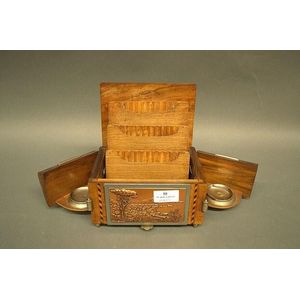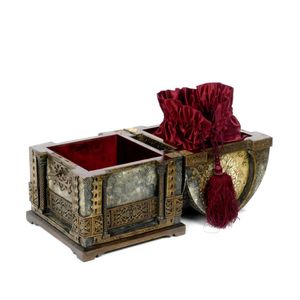Renaissance Revival Casket with Classical Allegories
You must be a subscriber, and be logged in to view price and dealer details.
Subscribe Now to view actual auction price for this item
When you subscribe, you have the option of setting the currency in which to display prices to $Au, $US, $NZ or Stg.
- Celluloid - In 1864 an American scientist by the name of Parkes mixed camphor with nitrocellulose, etc. The result was what came to be known as "celluloid", the first form of plastic, and a product for which Parkes could find no use.
Some time later when the supplies of ivory for making billiard balls were becoming difficult to obtain, an inventor produced a perfect billiard ball from a mould using "celluloid".
Toys, dolls and other products such as combs, cutlery handles and costume jewellery made from celluloid began appearing on the market from 1913 and continued to do so until the early 1950s by which time it was superseded by more modern products due to safety concerns because it was highly flammable and brittle product.
This item has been included into following indexes:
Visually similar items

Lovely 19th century Baptism bible, c.1866 of rectangular form, with painted outer leaf design, the cover decorated with central star and bird, flanked by strap work with religious figures, 14.5 cm x 10.5 cm

Antique French gilt snuff box, engraved decoration to lid, base and sides. Length 8.5 cm

A 19th century Chinese black lacquered and gilded games box, unfolded as a games board top, the interior with backgammon board.

Tunbridge musical cigarette box
